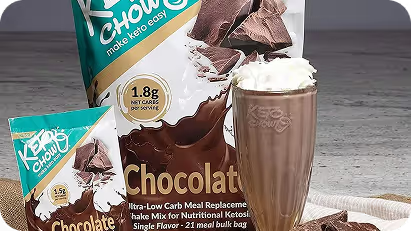5 tips to boost Customer Loyalty in E-Commerce
Customer loyalty has become essential for a subscription business to sustain its healthy growth and bottom-line profitability in the e-commerce sphere. Do it for repeat customers: Bang for the marketing buck; steady cash flow with predictable quantity; positive word of mouth and reputation for your brand. Implement the right loyalty program with rewards and incentives to increase your customer's loyalty and guarantee repeat business.
According to a recent PwC study, the most common reason over a quarter of customers shifted brands was because of poor experience. At such a high price, recovery through refills is expensive because it comes with the cost of acquiring new customers.
Now, according to CommerceNext, increasing acquisition costs is one of the big challenges for most e-commerce companies. However, retention is meaningful in the long run. With the best possible experiences, you can cut acquisition costs and promote customer advocacy.
What is Customer Loyalty in terms of e-commerce?
Customer loyalty in e-commerce is merely the unwavering commitment of the customer to a specific brand or company. As opposed to the traditional form of retail, footfall is surely not a parameter of calculation in an online business model, but it has instead heavily relied more on the level of engagement a company develops with its customers; every visit beginning from browsing over the website till a purchase falls in the paradigm of communication and can lead to building a loyal customer.
It takes more effort to win loyal customers back from competitors or to pull them back using lower prices. They tend to buy higher quantities of products or services, interact more frequently with a brand, and so on. Such loyalty is supposed to convert into higher sales, bigger average order values, and lower customer acquisition costs.
How Customer Loyalty positively impacts a subscription business
Loyal customers are the backbone of a successful subscription business in the highly competitive e-commerce space. They not only bring down the costs of a business but increases its profitability: Let’s understand in detail how loyal customers benefit an e-commerce subscription business:
1. Appreciates Customer Lifetime Value (CLV) and growth
In e-commerce, Customer Lifetime Value is a good metric which talks about the amount that a customer makes in revenue over their lifetime with the business. The CLV will give insight into a long-term perspective of a company's financial health. A high CLV is indicative of having strong product-market fit and brand loyalty besides recurring revenue from customers whom you already have.
The repeat purchase requirement helps drive up CLV. Multiple purchases from loyal customers generate much higher revenues than a one-time customer, and the retention focus leads to increased CLV as well as general profitability for companies.
2. Boosts Average Order Value (AOV)
Loyal customers are oftentimes more valuable to businesses than the first-time buyer. They spend more money per transaction because there are various reasons for this:
Instills trust and confidence: With constant purchase, loyal customers gain confidence with time in the brand, and familiarity becomes easier between the brand and its goods or services. Consequently, they are more likely to spend on higher-priced items or make additional purchases.
Lower risk: Perceived risk becomes lower while making a purchase from the brand for loyal customers. Quality, reliability, and value are assured to them.
Loyalty programs: Many companies operate loyalty programs in which a customer is given certain rewards when he or she continues buying the same merchant again and again. These loyalty programs may help loyal customers spend more dollars more frequently and spend more time interacting with the brand.
Customers can be nudged toward loyalty, thereby bringing in additional value to businesses in terms of average order value and overall profitability. By continuously being in touch with loyal customers, firms will be able to maintain revenue growth and also strengthen their long-term financial muscle.
3. Creates positive word-of-mouth
Normally, loyal customers act as brand advocates and talk to their personal networks about the brand. Based on their personal experience, positive recommendations can very well be a determinant of whether other people will visit the store. Word-of-mouth marketing is fundamental for the building of a strong reputation and successful business development.
4. Brings down Customer Acquisition Cost
Customer loyalty investment can help online sellers in saving costs for acquiring a customer. These customers are already aware of the brand, and that eats less marketing and onboarding efforts. More conversion rates and a high probability of passing on the brand name to others will make it an organic growth for the company.
Consequently, these priorities for customer loyalty will eventually allow business owners to optimize resources in a way that they won't waste them, which is saving money for the company by acquiring a customer.
Top strategies to skyrocket Customer Loyalty in E-Commerce
To build strong customer loyalty in e-commerce, businesses need a strategic approach. By creating exceptional experiences and fostering positive relationships, you can cultivate loyalty and drive long-term success. Here is the top 5 strategies to boost customer loyalty in e-commerce:
1. Prioritize Customer Service
Customer service is a great enabler of loyalty toward brands. Customers will retain their clients to buy again if they have great interactions with knowledgeable empathizing agents, but the opposite situation sends customers running.
So, to ensure such positive customer experience:
Train the agents right: Educate agents about product knowledge and empathy while dealing with problematic customers
Tools for Customer Service: Utilize a tool like Gorgias-a tool specifically designed for e-commerce for smooth process support and tracking interaction.
Provide Omni-channel support: Deliver customer service through various mediums such as phone, email, SMS, and social media.
Gather customer feedback: Conduct frequent surveys to understand the experiences during contact with customers and try to enhance those areas.
All these practices will raise customer satisfaction, loyalty, and business success.
2. Focus on personalizing customer experiences
But surely, personalized experiences are the ultimate proof of customer satisfaction and loyalty. According to McKinsey, most consumers expect to have personalized interactions and get frustrated if that expectation is not met.
Personalization refers to the actual delivery of relevant content and offers to customers around their preferences and behavior. A person who is interested in tennis shoes likes getting promotions on tennis shoes and not on dress shoes.
Use Guided Selling: Questionnaire tools help pick what a customer wants.
Use Data-Driven Recommendations: Use access to customer data in recommending products for consideration along with potential cross-sell and upsell opportunities
Segment your Marketing List: Segment your communications based on preference and interactions. You will further be able to activate your customers, develop loyalty better, and gain greater sales.
3. Make the Subscriber journey worthwhile
Brands should focus on making subscriber journeys worthwhile by giving them enough leverage to make their own decisions and rewarding them from time to time. Today’s consumer is a sucker for convenience and cost-saving which are the two primary benefits of a subscription model. This is why brands should just focus on optimizing these two features of the subscription model which will in turn result in customer loyalty.
Businesses can make it a reality by:
Making customers their own boss: Flexibility by skipping a shipment or switching the product also needs to be offered in your subscription software, and customers should be able to exercise these options. Studies show that these features have been known to greatly enhance retention since subscribers stay much longer; in fact, subscribers remain 135% longer with the same brand.
Reward loyal subscribers regularly: Rewarding your loyal subscribers periodically is a very effective way to show them that you are grateful for their commitment to your brand and these rewards are a way of acknowledging their support. For example, Good Protein gives their subscribers free super green juice on their 3rd order, 10% off on their 4th order and 25% off on their 5th order.
4. Set up an engaging loyalty program:
Customer loyalty programmes encourage customers to buy again. Both subscription-based and one-time purchase businesses are eligible to adopt customer loyalty programs.
Paid programs will drive much higher customer loyalty than free programs. McKinsey says a paid member is 60 per cent more likely to increase their spending. They have higher purchase frequency, bigger order sizes and greater brand affinity.
The most significant task of designing a paid loyalty program and also a free loyalty program is determining what incentive would better elicit the desired customer behavior.
Points-based loyalty program: This form of loyalty scheme involves offering customers points or "bucks" that can be earned through purchases or other forms of transactions. The points so earned can then be redeemed for a discount, free product, and so forth.
Tier-based loyalty program: A level-of-service loyalty program is a kind of rewards program in which distinct levels of benefits are served to customers based upon the level of their spendings or engagement with the brand. Customers move through the levels through the accumulation of points, completion of specific actions, and meeting certain spending thresholds.
Value-based loyalty program: A value-based loyalty program is a kind of rewards program in which distinct levels of benefits are served to customers based upon the level of their spendings or engagement with the brand. Customers move through the levels through the accumulation of points, completion of specific actions, and meeting certain spending thresholds.
5. Enhance post-sales customer experience
Expanding Customer Loyalty After the First Purchase Interaction Building customer loyalty goes beyond the point of making a first purchase. Offering an excellent post-purchase experience--shipping and returns, for example--is the difference between retaining customers and losing them.
The new study concludes that delays in processing returns can lead to customer dissatisfaction and increased churn risk. A well-functioning seamless post-purchase experience is hence one way of building loyalty and controlling customer defection.
Final Thoughts
Customer loyalty programs would help an e-commerce business significantly increase competitiveness while encouraging sales. In fact, the programs are best suited to maximize customer retention, promotions, and building long-lasting connections with customers.
One of the most important aspects in developing a good loyalty program is to understand various types: Points-based, tiered, or value-based. Decisions are indeed taken on some of these elements such as rewards, tiers, and how the values are redeemed.
That way, after thoughtful consideration of all these factors and continuous optimization of your loyalty program, you can make a valuable tool both for your business and your customers. Of course, customer-centricity plays a point as a fundamental aspect of the long-term success of any loyalty program.
Table of contents























.png)







.png)






































